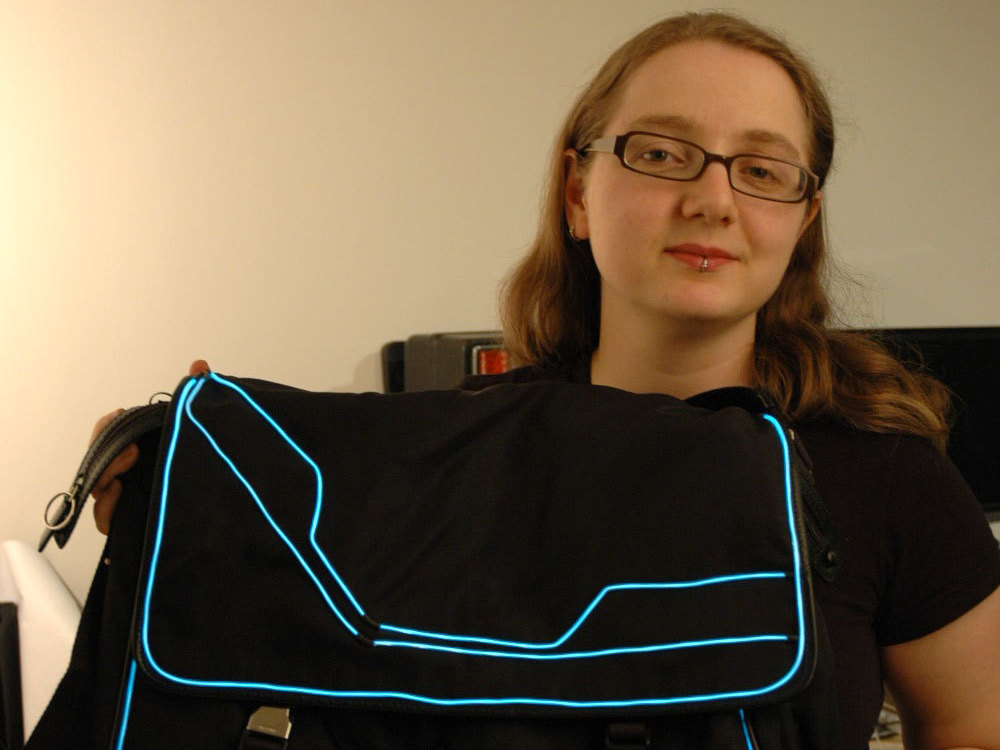The nice thing about most laptop bags is that they have a flap and pockets with strong piping and corners to protect the computer. We’ll take advantage of that!
We’re going to put a design on the large front flap. We’ll start by chalking it out.
Think about how you want the EL wire to travel around the bag.
EL is hard to solder to, and harder to ‘split’ so keeping it simple is key!
You’ll want to have all the ends terminate near a pocket that will hold the inverter.
Since the pocket-sized AA inverters can only drive 2 or 3 meters or wire maximum, it’s smart to keep the design short and sweet. Keep track of how long the final wire will be; add up all the segments and keep the number under 2.5m for the best look.
Of course, you can also use a larger inverter or two inverters!



